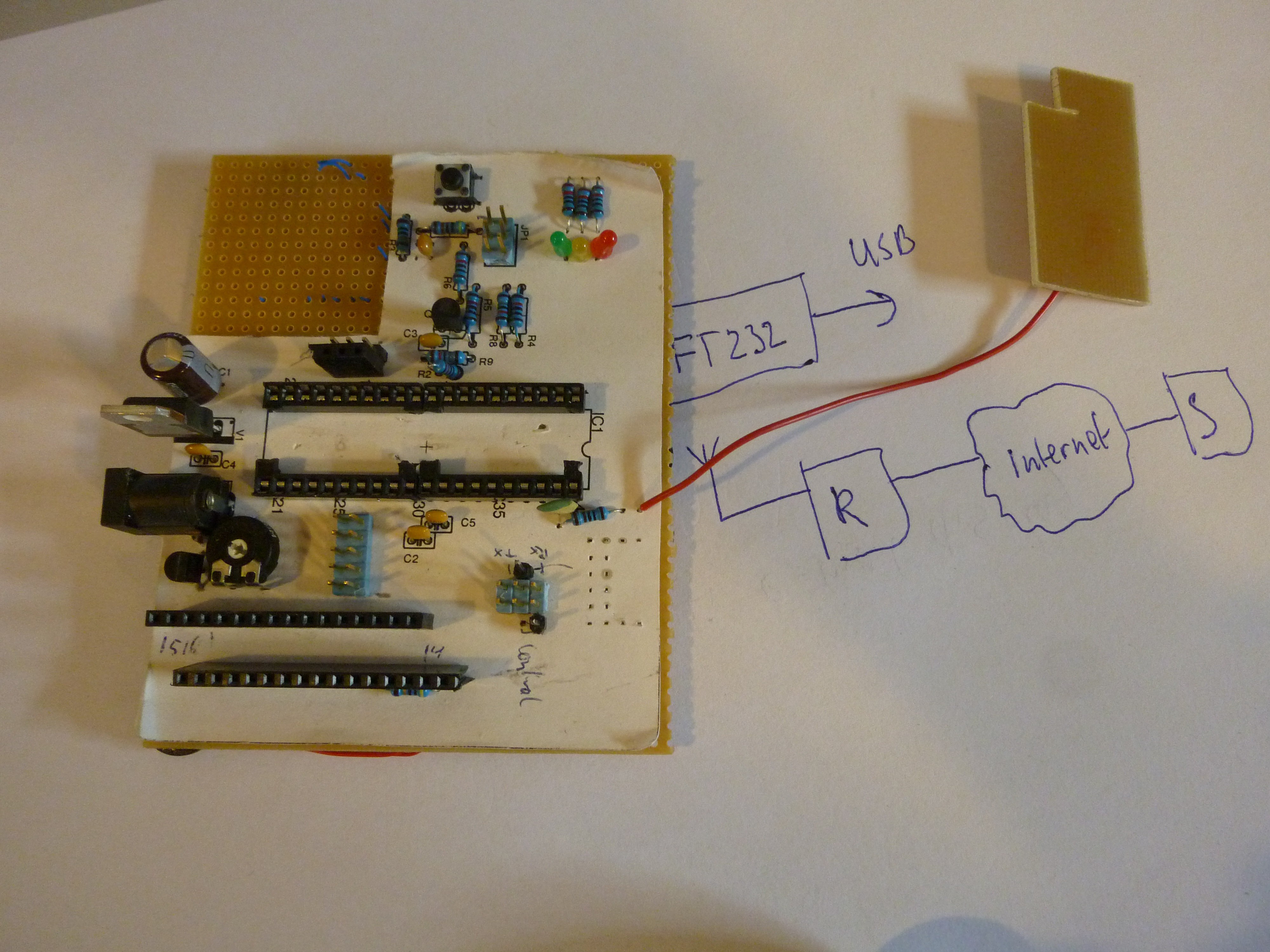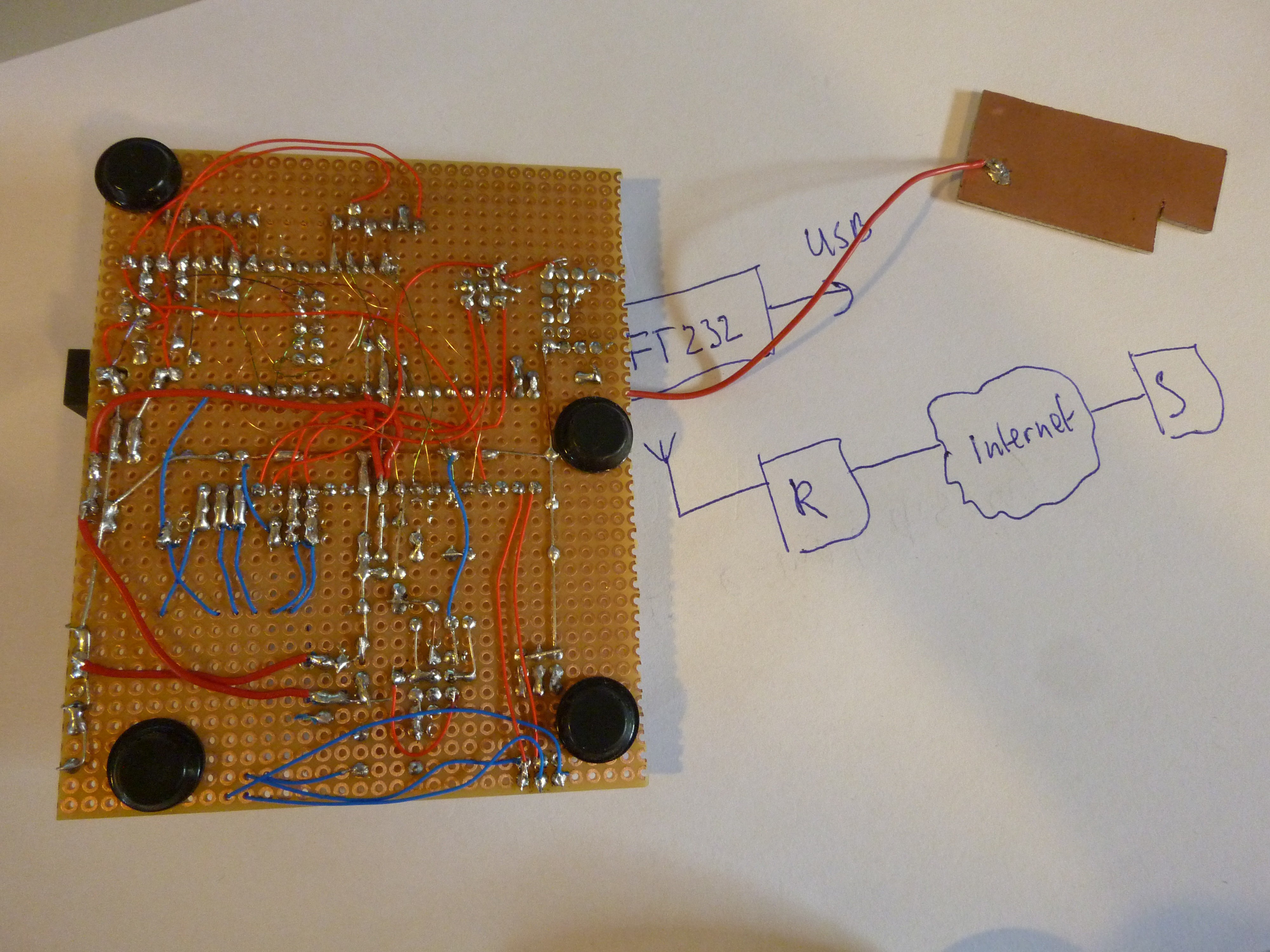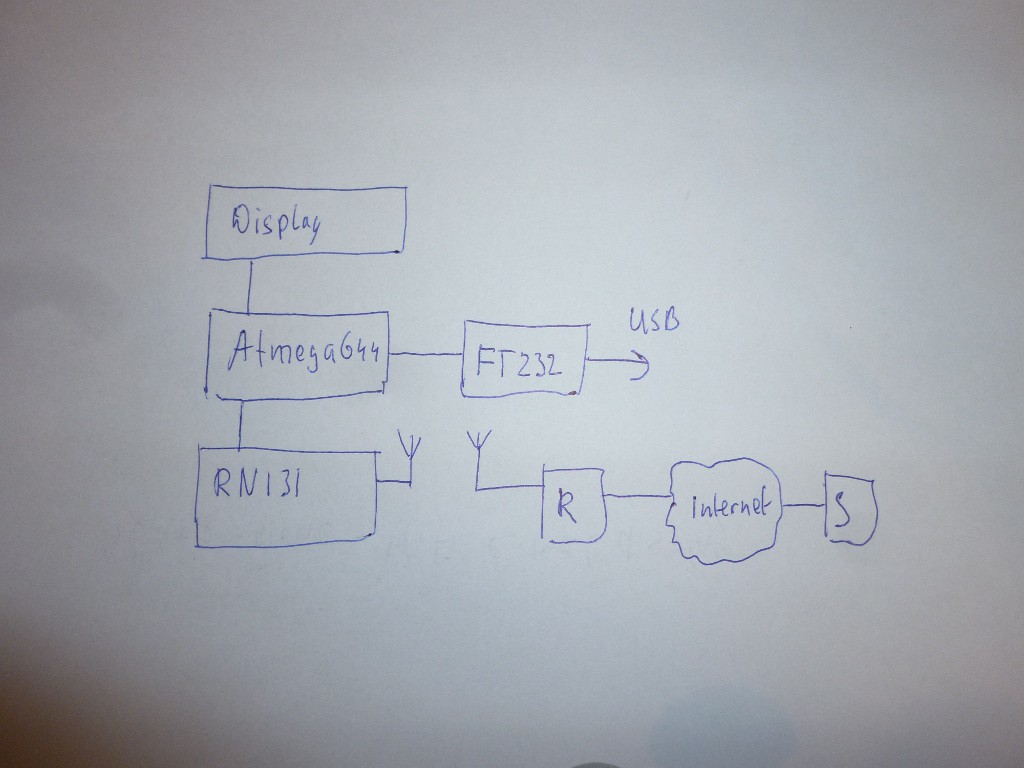-
Prototype: video
07/26/2014 at 19:16 • 0 commentsNow there is also a small video about the prototype, see here: http://youtu.be/ZzTIbmoQ0nk
-
Prototype pictures
07/26/2014 at 19:07 • 0 commentsPrototype pictures!
For all devices I make I start with a prototype on these kind of prototype PCB's. Single sided, with separate islands. Some people use stripboard but I prefer this because you don't have to break tracks and are not limited to one direction.
You see the valuable parts are removed. The wifi module was in the top left corner, connected with wires, floating above the PCB. The microcontroller was in the socket in the middle. On the right side, just below the microcontroller you see the holes where the MM232 module was (small module wih an FT232 chip). And the display is also removed. I used most of these parts in one of three units I produced.
The finished device has four touch buttons, the prototype only one. I figured that if one would work, four buttons would work just as well (and it did).
The wires are on the bottom. The red and blue wires are 32awg kynar wires: solid core, really thin and a little hard to strip. The tiny wires are RoadRunner wires: thin wires with an isolating coating. The coating is removed by keeping a drop of tin on your soldering iron and sticking the wire in that hot drop of tin. The coating melts and you can solder the wire.
Nowadays these thin wires are my preferred method of making these prototype boards. It's the fastest solution for me.
-
System structure picture
07/26/2014 at 18:49 • 0 commentsHere is a picture of the system structure
I chose an ATmega644 because it has two serial ports. I needed that because the RN131 uses one and the FT232 uses the other one.
The RN131 was at that time the best available solution for WiFi. Although, it did for example not support all types of wireless networks. If I remember correctly WEP64 was not possible. Not that you'd want WEP64 as encryption for your wireless network, but that's a different thing. Another thing I noticed in a different application is that the RN131 dropped characters if the WiFi signal strength was low.
The display is a nice DisplayTech 204A; 4 lines of 20 characters, the chosen version has a black background and white text, really nice. The picture of the project doesn't do right to the beauty of the display.
An FT232 is more or less your standard choice for USB to serial. It just works, it's simple to incorporate in a design, it is supported on all operating systems and, maybe because of all these reasons, really widely used.
-
YouTube video nr. 1 uploaded
07/26/2014 at 18:23 • 0 commentsI've uploaded a YouTube video that gives a quick overview of the system structure: microcontroller, wifi module, display and USB. Watch it here: https://www.youtube.com/watch?v=QpGKtC0IhtE
Standalone WiFi E-mail Notification Display
Displays the date, sender and subject of your e-mail in a non-intrusive way. Standalone, no running PC or special server required.
 Springuin
Springuin

